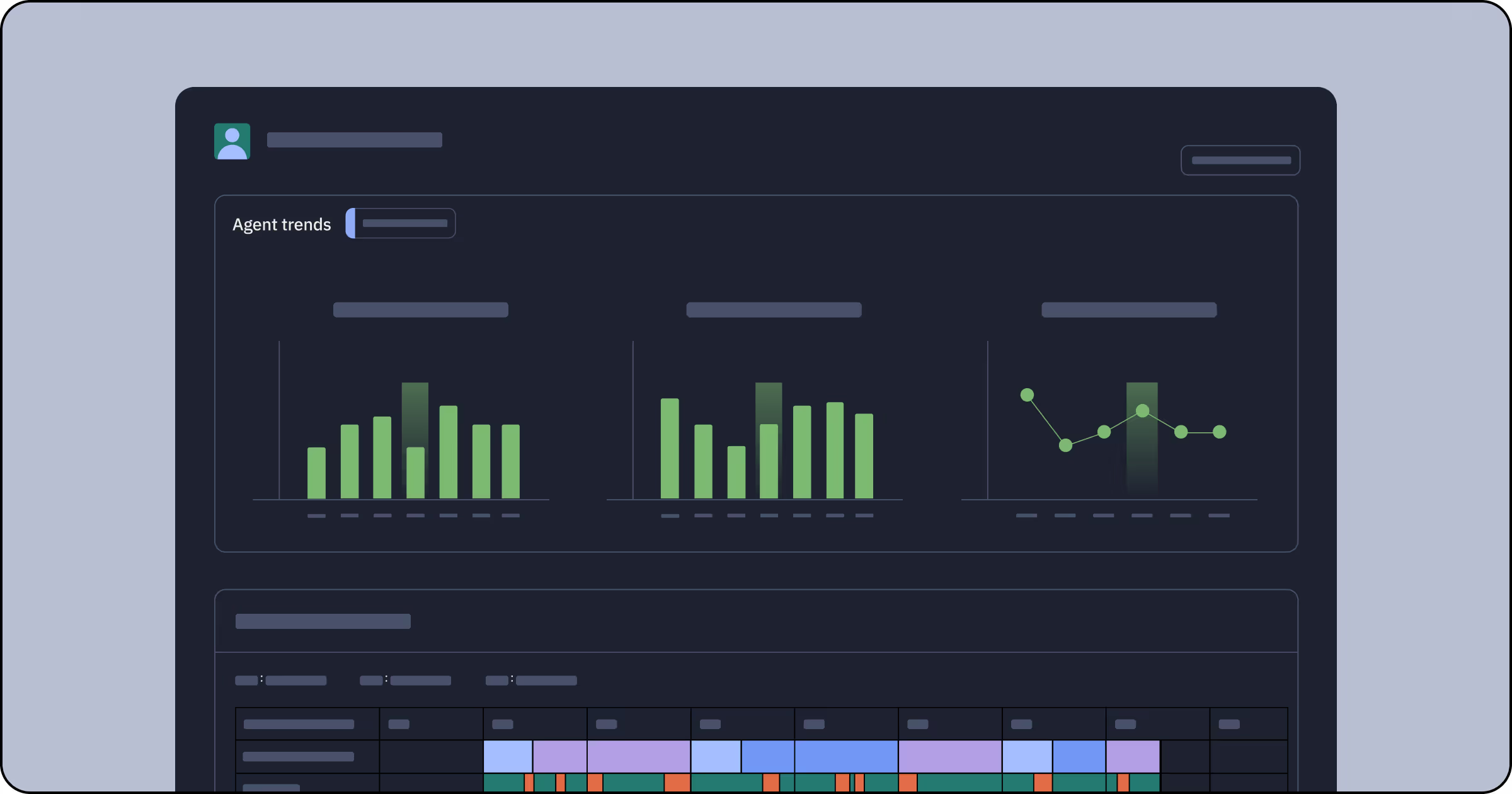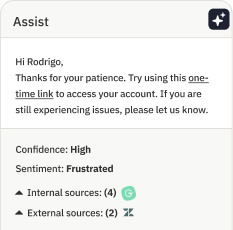WFM Solutions - Assembled

What's most commonly included in WFM solutions?
If companies want to compete in the modern era, they have to prioritize efficiency. The most valuable resource any company has is its time. It is important for everyone who works for the company (particularly those in higher positions) to be able to manage their time effectively. One of the processes that takes up the most time in a business is called workforce management. This is where WFM solutions become particularly helpful. When it comes to workforce management, there are a few important points to keep in mind.
First, it is critical to think about all of the various facets that go along with workforce management. For example, those who are responsible for managing the workforce of their company - typically workforce managers - have to make sure they have enough people available on staff to work every shift, which involves workforce scheduling. At the same time, this also involves something called workforce forecasting. There are many companies out there that experience seasonal changes when it comes to their employee demand. Therefore, it is a good idea to find ways to anticipate these changes in advance and then respond appropriately. And finally, workforce planning also plays a big role in workforce management, which involves taking a look at the company's resources when it comes to manpower and making sure that its use is being maximized. These are just a few of the numerous processes that play a key role in effective workforce management. The job of workforce managers is far from easy.
There are many companies that actually still handle all of these processes by hand. And while it is definitely important to obtain input from managers and executives, it is also extremely important to note that there is work for software that can automate many of these processes. When companies employ a workforce management solution that has been tailored to meet their own unique industry, they will then be able to expedite a lot of these processes, allowing them to keep better pace with their competition. Therefore, it is critical for all companies to take a good look at what their options are, when it comes to a WFM software solution, as doing so could provide them with an edge over the competition, while at the same time keeping both their employees and their customers happy.
What is mobile WFM software, and why is it important?
Over the past few years, there have been a lot of changes, when it comes to how employees are actually working. There has been an increased demand from employees that they be allowed to work from home. At the same time, however, this is also going to present a number of unique new challenges. While this approach is often better for the lifestyle of the company's employees (particularly in eliminating the time it takes them to commute to work), this is going to place a strain on the company's resources.
For example, employees are going to need to be able to access the materials they need to perform their job duties from home. This is where mobile workforce management software can be so helpful, as it can enable employees to make sure they know when they are able to work from home, and when they are supposed to come into the office. Furthermore, it will also provide employees with all the information they need to ensure that they can access their work documents in a safe and secure manner. It is important for companies to make sure they protect their information, even when their employees aren't in contact centers.
At the same time, there are other situations in which mobile workforce management software and hourly WFM tools can be helpful. When employees are not physically in contact centers, it can be a difficult challenge to track the number of hours that they are working. But hourly workforce management software can definitely help with this. In addition, you might also have some employees who have to travel into the field to meet the needs of customers and clients - which is just another situation in which mobile workforce management software can be so incredibly helpful, allowing managers to track when their employees are going to be in in-office and when they are going to be out in the field. This allows them to adjust their schedules appropriately, ensuring that all gaps are filled at all times.
What should I look for in workforce management tools?
At the same time, it is also important for managers and executives to know that there are plenty of options to choose from when it comes to workforce management software. Similar to other products and services, everyone needs to make sure that they understand all their options when it comes to workforce management. For example, many people out there today prefer to handle things on their mobile devices. This is also an area in which a workforce management app can prove to be helpful. When you take a look at workforce management jobs, it is possible to identify workforce management software call center apps that companies can use.
Having the right app can serve to greatly expedite workforce management processes, saving valuable time for managers, employees, and executives alike. For those who are looking for a workforce management app, it is important to find an application that can be used on multiple types of mobile devices, such as Apple and Microsoft products. It is also important to look for an app that prioritizes security because even though an app might not be a physical computer, it is still something that hackers could potentially exploit. All companies need to make sure they take the time to look around and find the right app for their own specific needs.
Why are workforce management tools important in call centers?
When it comes to the best workforce management tools, these can come in many shapes and forms. One of the places where workforce management is of particular importance is in contact centers. When looking at workforce management call center requirements, there are all kinds of tools available. For instance: many companies employ the use of templates and charts. But while templates and charts certainly have their place, there are many more advanced tools with key features that can help with workforce scheduling (especially where call centers are concerned) as well.
Call centers are naturally going to experience a lot of ebbs and flows when it comes to demand. For this reason, it is vital for call centers to adjust their scheduling requirements appropriately. To help with this, workforce management tools can be used to anticipate demand, ensuring that companies are able to schedule the right number of people to work based on their anticipated demand. By feeding historical data into software programs, companies are able to automate many of their scheduling processes.
What is workforce planning, and how does it different from WFM software?
Another important component of workforce management that everyone needs to know about involves workforce planning software. This is different than forecasting and scheduling, which is typically released to the clerical process of scheduling people to work. Rater, workforce planning software is used to take a closer look at the effectiveness of how the company is currently using its manpower.
For those out there who may be wondering “what is workforce management software?”, workforce management software refers to technology that is used to ensure that companies are handling their employees appropriately. For example, companies are able to use workforce planning software to take a look at areas in which they might have too many employees, and areas in which they might have too few. Furthermore, workforce planning software can also be used to make sure that companies are maximizing their employees’ abilities. There could be situations in which employees might require additional training. There could also be situations in which employees might need additional assistance. Workforce planning software can also be used to let managers know whether they need to hire more people. All of this, of course, plays an integral role when it comes to workforce planning.
Who benefits from workforce management software?
There are countless industries that employ workforce management software. For example, workforce management companies develop software that can be incredibly useful for sales. When it comes to sales, workforce management software can serve to let managers know when their employees are out in the field meeting with a client, and when they are going to be in the office. This can be very helpful for deciding the ideal time when certain meetings, training sessions, or other company events should be scheduled.
When it comes to enterprise workforce management software, this is also particularly helpful in the healthcare field. There are lots of regulations when it comes to how many hours doctors are able to work. Additionally, there are also complicated call schedules that have to be handled. And once this is combined with 24/7 coverage, vacations, and sick leave, it can be extremely difficult to manage a healthcare system. Fortunately, though, workforce management software has been developed specifically for hospitals and physician practices, allowing them to address these issues in a comprehensive manner.
In the end, it’s important to note that workforce management software is going to be helpful in just about every industry that there is. It is important for every company to make sure they employ workforce management solutions that have been tailored to meet their particular industry.
What does a successful workforce management system look like?
In order to run an effective workforce management system, there are numerous workforce management services that all have to come together to make this happen. For those who work in a call center, it is absolutely critical to employ call center workforce management best practices.
First, all managers need to make sure that they are tracking the appropriate metrics. They need to know how their employees are doing when it comes to call resolution time, percentage of calls resolved on the first attempt, and how long customers are waiting for each call. Second, it is also crucial for managers to provide employees with enough autonomy when it comes to workforce scheduling. Doing this will free up the managers’ time, allowing them to then focus on other issues. And finally, it is also important to note that workforce management is a process, not a destination. Anyone running a call center should constantly re-evaluate their systems, to ensure that they are doing what is best for not only the company but also for their customers and employees. With an attitude geared toward constant improvement, everyone will be able to always get the most out of their workforce management systems.




